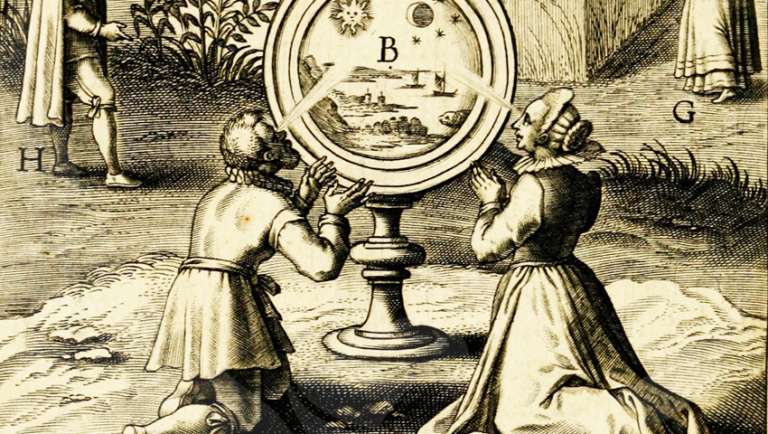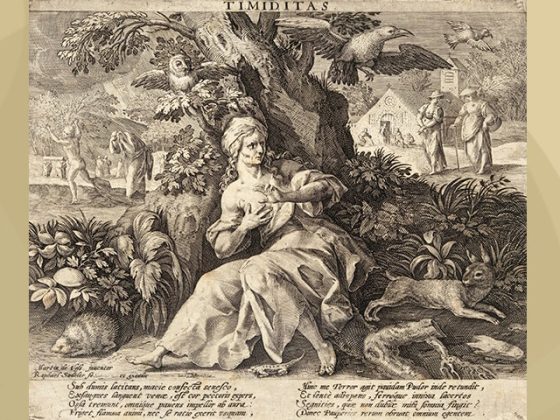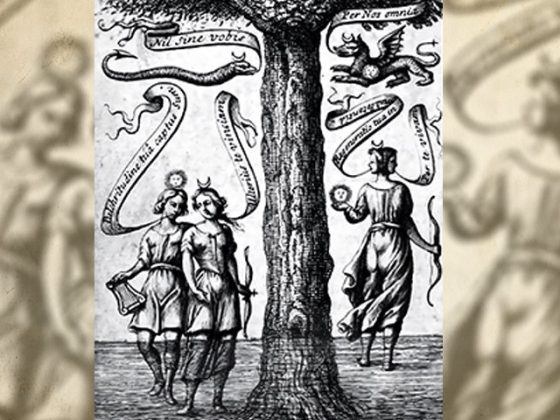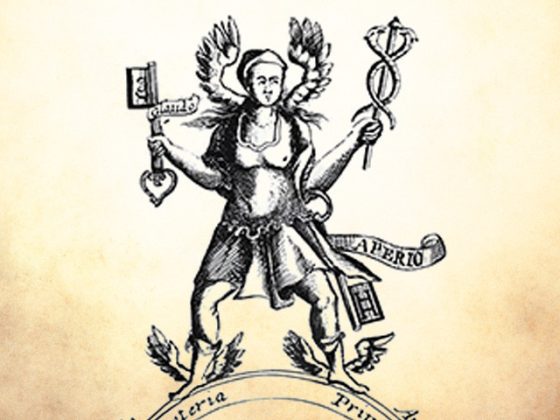Queridos/as amigos/as:
I hereby send you this engraving entitled…
SPECVLUVM CREATVRARUM
─'Mirror of Creatures'─
This engraving was made by the Jesuit Ioanne David (1546─1613) and he developed it in the eighth chapter of his book entitled Dvodecim specvla Devm aliqvando videre desideranti concinnata.
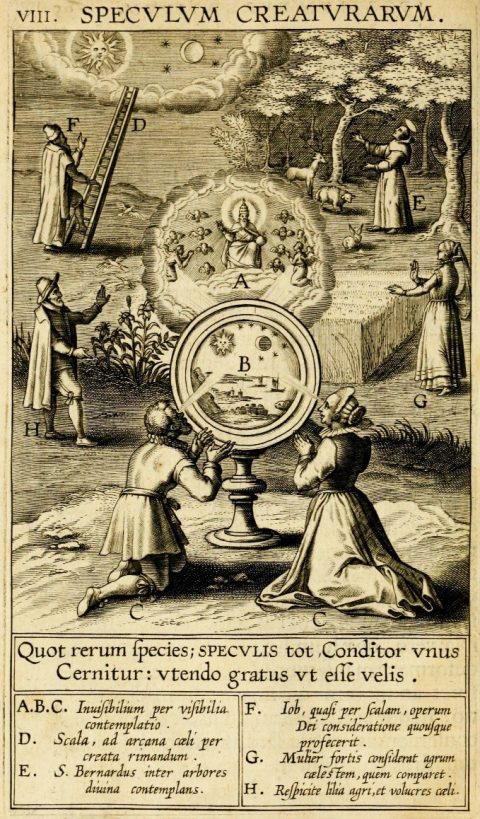
In the foreground of the image, a man and a woman ─C─ are kneeling in prayer before a large mirror ─B─, which shows a landscape with a Moon, a Sun, stars, ships sailing near a shore with buildings, etc. The rays emanating from their eyes show that they are looking at this reflection. Behind the mirror God the Father is seen in a circle of clouds surrounded by angels ─A─. This shows that, through meditation, in the face of the visible world, the invisible can become recognizable.
In the background on the left ─D─ is the ladder that allows for the exploration of the secrets of heaven. The man who climbs the first rung ─F─ is not Jacob ascending the ladder to heaven, but Job, who walks on the path of God. Job was able to grasp the divine world and therefore he sees the stars, the Sun and the Moon on high.
In the background on the right ─E─, a saint stands among trees and animals looking at the sky. At first glance it appears to be Saint Francis of Assisi with the animals, but the text tells us that it is Saint Bernard, who reflects on the divine things among the trees. In the background, on the right, in front of a wheat field, is a woman ─G─, who compares the heavenly field with the earthly one ─in the text of the book the author refers to Proverbs 31:10, “In praise of the virtuous wife”─.
Let us now enter into the analysis of some Latin phrases linked to our engraving, let us see:
“Quot rerum species; SPECVLIS tot, Conditor Vnus
Cernitur: vtendo gratus vt esse velis.”
Translation: ‘However many kinds of things there are, in so many mirrors only one Creator is seen, so that you want to be grateful when you use it.'
“A.B.C. Invisibilium per visibilia contemplatio.”
Translation: ‘Contemplation of invisible things by means of visible things'.
"D. Scala, ad arcana coeli per creata rimandum."
Translation: ‘A ladder to enter the mysteries of heaven through creation'.
“E. S. Bernardus inter arbores divina contemplans.”
Translation: ‘Saint Bernard contemplating divine things among the trees'.
“F. Iob, quasi per scalam, operum Dei consideratione quousque profecerit.”
Translation: ‘How far Job, using a ladder, came to behold the works of God.' In the text of the book the author refers to Job 23:11: “My feet have followed his footsteps: I have kept his way and have not turned away.”
«G. Mulier fortis considerat agrum coelestem, quem comparet».
Translation: ‘The strong woman looks to the heavenly field to acquire it.'
"H. Respicite lilia agri, et volucres coeli".
Translation: ‘Look at the lilies of the field and the birds of the sky.'
When we now enter into the analysis of the figures in the engraving, we see, firstly, a couple made up of a man and a woman, who, kneeling, are contemplating a mirror in which stars, a sun, a moon, etc., etc. can be seen. This is to be interpreted as the mirror of clairvoyance.
Behind the mirror we can perceive God the Father surrounded by clouds and little angels, all of which tells us that, even though we are in the visible world, through meditation and prayer we can grasp the invisible world; we can, internally, connect with the BEING and the celestial hierarchies.
The ladder that we observe at the foot of the tree symbolizes the degrees of perfections that we can acquire if we are faithful to the BEING and remain firm in the inner work. We must not believe that it is about Jacob and his famous ladder mentioned in the Holy Scriptures, it is about Job and his personal ordeal when God subjected him to terrible trials.
On the right, at the other end, we see a saint surrounded by animals and at the same time exploring the sky, while listening to the leafiness of the tree. We could be told that it is Saint Francis of Assisi, but in reality it is Saint Bernard. Every true Initiate always loves nature and its creatures, because he understands that in all creation the divine life is latent.
Then we see a woman in front of a wheat field, and, according to what the author of the engraving wrote, it is a lady who compares that earthly wheat field with the celestial world. Let us remember that the wheat seed is related to the alchemical seed, hence at the end of this description Proverbs 31:10 is alluded to and the “praise of the virtuous wife” is mentioned.
I now give you a few sentences for your reflection:
“Philosophy is the story of human error with a few sparks of light.”
Otthon Gruppe
“True philosophy is nothing other than the study of death.”
Newton
“Some philosophy distances us from religion. A lot of philosophy brings us back to it.”
Bacon
“What is a philosopher? A man who, if you listen, will surely make you freer than all the praetors.”
Epictetus
“The customs of the philosophers are not in conformity with their precepts; but if they do not live as they teach, they teach how to live.”
Seneca
ERRARE HUMANUM EST.
─'To err is human'─.
KWEN KHAN KHU


